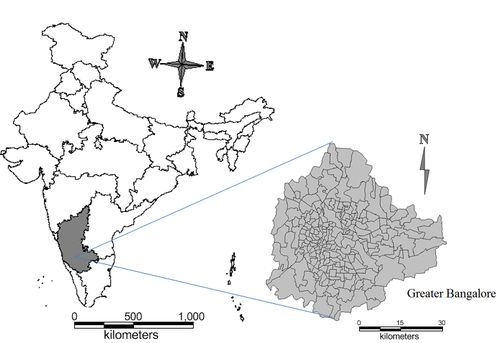Dr. T.V. Ramachandra
Energy & Wetlands Research Group,
Centre for Ecological Sciences, Indian Institute of Science, Bangalore – 560 012, INDIA.
E-mail : cestvr@ces.iisc.ac.in
Tel: 91-080-22933099/23600985,
Fax: 91-080-23601428/23600085
Web: http://ces.iisc.ac.in/energy
Bharath H. AithalEnergy and Wetlands Research Group, Centre for Ecological Sciences, Indian Institute of Science, Bangalore – 560 012, India
E-mail:
bharath@ces.iisc.ac.in
Durgappa D. SannaCentre for Sustainable Technologies (astra), Indian Institute of Science, Bangalore – 560 012, India
E-mail:
durgappa@astra.iisc.ac.in
Ramachandra T. V., Kumar, U., 2008. Wetlands of Greater Bangalore, India: Automatic Delineation through Pattern Classifiers. Electronic Green Journal, Issue 26, Spring 2008 ISSN: 1076-7975.
Ramachandra, T. V., Kumar, U., 2010. Greater Bangalore: Emerging Heat Island, GIS for Development, 14(1): 86-104 http://www.gisdevelopment.net/application/urban/sprawl/Greater-Bangalore-Emerging-Urban-Heat-Island.htm
Sudhira H.S., Ramachandra T.V., Bala Subramanya M.H., 2007. City Profile: Bangalore., Cities l24(4), 379-390.


